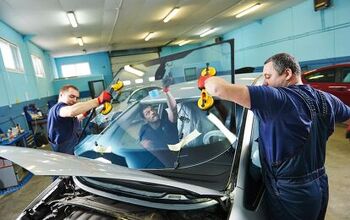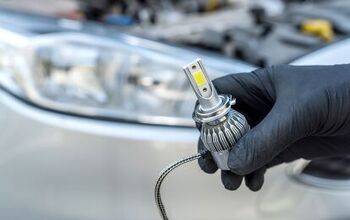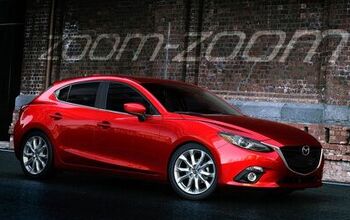How to Negotiate Car Price: 10 Things You Need to Know

Negotiating a price on a vehicle – new or used – generally ranks up there with a root canal in terms of the amount of aggravation it invokes in most people.
Sure, there are a few weirdos like your author who take on negotiation with the type of zeal usually reserved for one of the Kardashians posting to Instagram, but I’m in the minority. Most people severely dislike it.
And rightly so. We don’t negotiate the price of milk at the corner store, nor do we generally ask for discounts at the register after picking up a new pair of jeans at the mall. Yet, the art of negotiation is pervasive amid the car industry (and other industries such as real estate) so it behooves the smart shopper to make like a Boy Scout and be prepared.
We’ve assembled some of our thoughts on the subject and presented ten of them in this article.
1. The bi-weekly trick and the ‘run up’
Let’s get one thing clear from the start: savvy salespeople will try and get you to disclose a level of monthly payment with which you’re comfortable. This will provide a starting point for pricing and negotiation with which they can work. Equally important? The sum of $200 bi-weekly is absolutely not the same as $400 per month. For that, we can thank a quirk of mathematics.
In a bi-weekly scenario, the customer makes 26 payments a year. In our example, this will equate to $5200 per annum. However, in a monthly repayment plan, there are only 12 payments a year, making the total amount spent every annum – in this scenario – just $4800. Multiply that annual difference over a six-year loan, and it permits the salesperson to sell you a car that costs $2400 more than you may have intended to spend.
This is called the ‘run up’ and can happen very early in the shopping experience. Consider the following conversation.
Sales: “So, what’s your target for a monthly payment?”
Customer: “Oh, about $400.”
S: “So … $200 bi-weekly?”
C: “Yeah, roughly.”
S: “Up to … what? If you had to?”
C: “Well, $215 at most. Definitely no more than $220.”
And with one fell swoop, the sales rep has the customer pegged at a $225 bi-weekly payment. Trouble is, that translates into monthly payment of $487.50, far beyond what the customer intended to spend when they walked into the place.
To put that sum in perspective over a 72 month loan at 0% interest, it permits the salesperson to try and sell you a vehicle that costs a total of $35,100 instead of $28,800. That’s a huge delta, one which really only becomes apparent after a person drives off the lot and wonders where all the money went in their budget.
As a rule, always look at how much a vehicle is costing in total, not just the monthly payment. This sum will include the car itself, interest charges, and a myriad of fees – the latter of which are not always kosher.
2. There isn’t as much profit in some vehicles as you may think
Photo credit: Zsolt Biczo / Shutterstock.com
Yes, brand-new trucks and expensive SUVs are laden with profit margin, which explains why manufacturers build millions of the things and dealers fall all over themselves to pack their lots with them. However, that subcompact sedan at which you’re looking for a cheap daily runabout? There’s likely to be less than $1000 margin between invoice price and MSRP, leaving dealers with little opportunity to make money on the car itself (but there’s plenty of other ways in which they make bank, and we’ll talk about them below).
SEE ALSO: Car Buying Tips For New and Used CarsUsed vehicles are a whole ‘nuther kettle of fish since the true cost to a dealer on second-hand cars varies wildly. It is dependent on how much they initially paid for the car, what – if any – repairs they had to make before putting it on the lot, and a myriad of other considerations. But know this: there’s often a lot more profit in used cars than new cars. If your sales rep is gently trying to steer you from a base model new car to a year-old unit with low miles and more features, that’s probably why.
3. MSRP is a suggestion
Covered in another article, MSRP is an acronym for Manufacturer’s Suggested Retail Price. Since dealers are free to set their own pricing, this number merely represents a starting point and rarely has any basis in reality. There may be publicly advertised incentives to drive down the price, special rebates for loyal customers, and – of course – the almighty profit margin.
In fact, the very notion that MSRP can be negotiated is right there in its name: suggested. All of these items – rebates, local markdowns, and so forth – conspire to reduce the MSRP, though there are other considerations, one of which we’ll talk about right now.
4. What’s the deal with this ‘holdback’ my friend told me about?
Photo credit: Brancis Ford Coppola / Shutterstock.com
Your friend likely knows the term but not precisely what it means. Holdback is often a percentage of a new car’s MSRP, provided to the dealer usually on a quarterly basis. For example, if a $30,000 vehicle has a profit margin of $2000, the dealer could be paid an extra $750 by the manufacturer at some point in the future. The point of holdback is to help a dealer offset their costs (read: commissions) and the money generally shows up in as a lump sum from the manufacturer in the dealer’s bank account once per fiscal quarter.
SEE ALSO: How to Test Drive a CarTo be clear, dealers generally consider holdback to be sacrosanct and bringing it up point-blank is a decent way to find yourself out in the cold while negotiating. We present this knowledge about holdback to make you aware it exists so if, for example, you’re holding out for a few extra dollars on a trade value you can be confident that a dealer can likely come up with the money if they really want to. In our case, if the customer and seller are just $500 apart from a deal, they may agree to your terms knowing the holdback money is coming from their manufacturer later in the year.
5. Profits are generally made in the business office
We’ve established some vehicles don’t have all that much of a profit margin. Fine. What does have a healthy profit margin are the services and products being sold in the so-called business (or finance) office after you’ve agreed to a final selling price with the salesperson. From the loan agreement itself to nitrogen in the tires, there is ample opportunity to inadvertently tack thousands of dollars onto your vehicle’s note.
This isn’t to say that all items being offered at this stage of the sales process are worthless; certain warranties that are backed by the vehicle manufacturer can be valuable for people who drive a lot, for example. However, be wary of items like ‘safety & security’ or ‘window etching’ charges, along with exorbitant charges for dealer-applied paint protectants or accessories. It is not a stretch to say that while a dealership might only make a few hundred dollars profit on a subcompact car itself, there’s opportunity to for that amount (and more) to be made in the business office.
6. A better interest rate can likely be negotiated
Photo credit: Lightspring / Shutterstock.com
Dealers can also make money through the financing terms of a vehicle, generally when someone is buying a used car. Most dealers – there are exceptions – don’t loan money directly to a customer; instead, they work with financial lenders to secure the funds needed. In these cases, the dealer is simply a bridge between the customer and lender, removing the need for John Q. Public to shop around for a good deal on financing. At least, that’s the intent.
As one would imagine, high volume dealerships have close relations with certain money lenders, to the point where most of them are paid a particular sum of money by the lender on a per deal basis – not unlike that time you gave your buddy twenty bucks for helping you find a good contractor to finish your basement. For lack of a better term, let’s call it a referral fee.
SEE ALSO: What is Financing a Car? And What is a Good Financing Rate?Here’s the rub: that referral fee can often be negotiated for a better interest rate. Let’s imagine that a dealer selling you a used car has secured financing from Lender A with a rate of 4.9% In this scenario, the dealer may be getting a $300 referral fee from the lender, though the customer is not supposed to know anything about that part of the transaction. Lender A will make money on the loan via interest, the dealer gets their fee, you get your car, and everyone’s happy.
Or are they? In some instances, it is possible for a dealer to ask Lender A for a better rate. Why might this happen? Perhaps the customer is complaining that 4.9% is too high, or perhaps the customer’s targeted monthly payment can only be met if the rate is a percentage point lower. This is why, in some cases, the dealer may opt to take a smaller referral fee from Lender A in exchange for a better financing rate. If the dealer is eager to make a deal – perhaps it’s the end of the month, or maybe the car in question has been on the lot for a long time – it’s possible they will take a haircut on the their referral fee in order to make the deal work and get rid of the car.
7. Profits on warranties and protection products are very high
As mentioned earlier, the profits on these types of products can be very attractive to a dealer. Warranties generally won’t cost the seller a penny unless something actually goes wrong with a car, while paint protection and upholstery protection products can have markups of well over 100 percent. Treat these line items carefully and don’t agree to anything with which you are uncomfortable.
8. Practice walking away
Photo credit: stockwerk-fotodesign/ Shutterstock.com
As this is being written in mid-2021, the used car market is quite hot thanks to a myriad of reasons. With the number of new cars on dealer lots dwindling thanks to supply shortages and production issues, more customers are having to opt for a used car, driving up prices in that market as well.
However, it is still true to say that – by and large – there will always be more cars to buy. If you walk away from a deal (literally or figuratively) because the price was too high or some other aspect of the transaction gave you pause, there are plenty of other dealerships that would only be too happy to sell you a vehicle. While the market may be red hot at the current moment (May 2021), the situation will eventually stabilize.
9. Be upfront – but do your homework
The phrase ‘buyers are liars’ is often thrown around behind closed doors at a dealership like rice at a wedding. While rude, it also has roots in truth. Some buyers will completely obfuscate their true intentions, saying one thing but then doing something completely different. Don’t give away the shop, of course, but be truthful about the cars you’re cross-shopping and your intentions of when you plan to pull the trigger.
10. Shop around
If there’s no other piece of advice that sinks in from this article, make it this: shop around. Simply buying another RAV4 – because that’s what you’ve had in the past – without taking the time to sample its competitors is doing yourself a disservice. The cross-shopping might reveal features or benefits of another car of which you weren’t aware or, at the very least, it’ll validate your opinions of the RAV.
Even after settling on a particular make and model, there are often several dealers for the same brand within close proximity, not all of whom will sell their cars for equal prices (remember that MSRP is just that – a suggestion), nor will they likely offer you exactly the same amount on the vehicle you’re trading. Always be sure to shop around and compare notes.
Photo credit: pathdoc / Shutterstock.com
Become an AutoGuide insider. Get the latest from the automotive world first by subscribing to our newsletter here.

Living in rural Canada, Matthew has immersed himself in car culture for over 30 years and relishes the thought of a good road trip. A certified gearhead, he enjoys sharing his excitement about cars and is very pleased to contribute at AutoGuide. Matthew is a member of Automotive Journalists Association of Canada (AJAC).
More by Matthew Guy




































Comments
Join the conversation